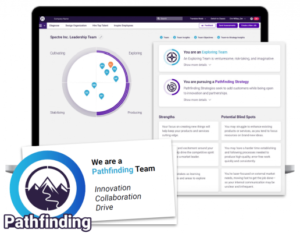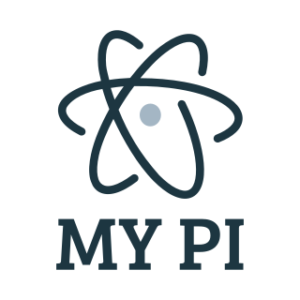
What is Team Discovery by The Predictive Index?
Unlock the full potential of your team with data-driven insights from Team Discovery™, helping you build a cohesive, high-performing unit aligned with your strategic goals.
Reading Time: 7 minutes
Last week, we shared with you some common mistakes companies use when writing job adverts.
We shared some practical examples on how to make them more inclusive so that instead of acting as a barrier, they attract the RIGHT talent.
What do you do once you have your list of candidates?
Deciding on which of these candidates you will interview is a massive challenge.
Just like with making your job adverts more inclusive, in order to make sure the RIGHT talent makes it through this part of section, it is important to make sure your criteria for selection is also inclusive and free of bias.
Most larger organisations have rigid structures in place to mitigate bias. However, young and vibrant companies are more vulnerable. Yet, they are also more agile and can make changes quickly to create more inclusive hiring processes to beat the bigger competitions to the RIGHT talent.
Finding the right person for a job isn’t as simple as ticking a box. For modern companies looking to grow and thrive, hiring is a big deal. They put a lot of thought, time, and effort into getting it right. But, here’s a surprising fact: recruiters often take just six seconds to look over someone’s CV. Yes, only six seconds to make up their minds!
There’s more going on behind the scenes, though. While many managers trust their gut feeling when hiring, a lot can go wrong. When 85% to 97% of hiring managers rely primarily on intuition, and nearly half of HR managers admit that bias sways their candidate choices, it’s clear: we need to think differently.

In today’s fast-moving business world, every second counts. But can you believe recruiters spend only six seconds looking at a CV? It’s hard to imagine that so much about a person is judged in such a short time. And here’s a little secret: it’s not just what you say, but how you say it.
For businesses looking to hire the best talent, this tells us something. It’s not about being quick to judge, but making the most of that short first look. A CV is just a starting point. There’s more to a person than what’s on paper. Maybe it’s time to use tools that help us see a fuller picture of what someone can bring to the table.
So, how do we use this information? How can we make sure that quick first look leads to a deeper understanding of what a person is truly about?
You May Also Be Interested In
I have spent more than 10 years’ recruiting for companies. I have experienced the ebb and flow of job vacancies and job offers, and unearthed a key component many overlook – the pivotal role of timing. …
Most leaders of new organisations have something in common. They trust their gut more than anything else. Intuition is what has got them to the top. Or so they think.
Trusting your gut is something many people do, especially when hiring. In fact, most hiring managers, up to 97% of them, say they rely on their gut feeling. But here’s a question: what if our gut feelings miss something?
Intuition is valuable. It comes from our experiences, our understanding of jobs, and our ability to see if someone will fit into the company. But sometimes, our gut feelings can get it wrong. Maybe we like someone’s personality a lot, or maybe we get a wrong first impression.
That’s why it’s a good idea to use tools that give us clear information. Data can show us things we might miss, and it doesn’t have feelings or biases. For example, a tool might show us facts about a person’s skills that our gut feelings didn’t pick up on.
Mixing our gut feelings with solid information can give us a full picture. It’s like having a safety net for our decisions. For businesses that are growing fast, making the right choice is important. So, let’s keep trusting our instincts, but let’s also use tools that help us be sure.

In many company meetings, people talk a lot about ‘diversity’ and being ‘inclusive’. But there’s a problem: many businesses still have biases when hiring. Nearly half of HR managers say that they let their biases affect who they choose. And 42% of hiring experts think biases are why some interviews don’t work out.
Bias can show up in many ways. For example, older workers get fewer callbacks than younger ones. People might also be biased because of someone’s gender, background, or where they studied. These biases can stop companies from hiring the best people and can go against the idea of being modern and open-minded.
What can businesses do about it? First, they need to admit they have biases. It might be tough, but it’s important. Regular training, workshops about being inclusive, or hiring without knowing someone’s name or background can help.
Using tools can also be a big help. Tools like predictive index tests give clear facts about someone, without any biases. For companies that want to be modern and fair, this is the way to go. It makes sure the best people get the job, no matter who they are or where they come from.
In the quest to make hiring decisions more objective and free from biases, many companies are turning to psychometrics. These are tools that measure individuals’ skills, personalities, and abilities in a systematic way, reducing the influence of personal perceptions and prejudices. There are several leading providers in the realm of psychometrics, and among the standouts is the Predictive Index. With tools like these, the process of recruitment gets a boost, allowing businesses to select candidates based on clear data, rather than mere gut feelings or potentially biased views.
Today, we use data to make all sorts of decisions, from what to sell to understanding what customers like. So, why not use it for hiring too? This is where the predictive index (PI) comes in. It’s a tool that helps modern companies make smarter hiring choices.
Think of the PI as a guiding light in the confusing world of hiring. There are many issues when hiring, like biases or choosing someone with the wrong skills. The PI helps clear up these problems. It gives real facts that, combined with a manager’s own feelings, makes sure the right people get the job.
So, why is the PI great for modern companies? Firstly, it’s perfect for companies that like to do their research and think about the long-term. It helps them make decisions that are good for the future.
For companies that have trouble hiring the right people or keeping them, the PI is a big help. It’s not just about getting someone in the door. It’s about helping them grow, understanding what they want from their career, and making sure it matches the company’s plans. It’s a bridge between what the company wants and what someone can do.
Also, the PI easily works with other systems a company might use, so it’s super convenient.
In short, the predictive index isn’t just a test. It’s a guide that helps modern companies find and keep the best people. As these companies grow and change, the PI makes sure they have the right team with them.
Change is always happening, especially in the world of new businesses and small companies. Hiring is a big challenge for these modern companies. We’ve talked about the problems of just going with your gut feeling, how bias can affect choices, and how tools like the predictive index can help. It’s clear that the way we hire people is changing.
For companies that want to do things differently, it’s important to see that a person is more than just their resume or the first time you meet them. Everyone has different skills, dreams, and talents that you can’t always see right away.
So, what’s next for the people leading these changes? It’s a chance to change the way we hire. Using tools like the predictive index is a good first step. But the real work is in creating a company that values both data and personal feelings, knows when old ways don’t work, and is ready to try new things for a better future.
As we wrap up, here’s a message for all the leaders of modern companies: The future of hiring is here. It’s more detailed and uses lots of data. Let’s be ready for it, with the right tools and a strong focus on getting the best people.
You May Also Be Interested In
As organizations become more competitive, it has become increasingly important for them to hire employees with the right skills and fit for the job. To achieve this, many employers are using psychometric assessments to evaluate potential employees.
360 Talent Solutions Ltd is an Associate Partner of Humanostics® , a PI Certified Partner authorised to use the science, assessment software, and curriculum of management workshops of The Predictive Index.
In partnership with Humanostics, we provide companies in the UK and across Europe access to the assessment tools provided by The Predictive Index.
Take the 6-minute PI Behavioral Assessment™ today. Once you have completed the 6-minute assessment, I will send you a Full Behavioral Report by Predictive Index.
From supporting the growth of leading pharma companies over the past 10 years, I have learnt that when it comes to predicting future performance, technology is key:
For me, hiring without the use of psychometric assessments is like trying to put together a jigsaw puzzle with pieces missing … and no picture on the box. It’s not fun, it takes longer, and when you are almost finished, you realise you have pieces missing.
Take the assessment today and start measuring more to improve your recruitment.
If you are interested in learning more or are ready to incorporate behavioral data into your recruitment process, please contact me today, I will be happy to help.
Let’s get started!
Dave Crumby
Founder at 360 Talent Solutions
Certified Predictive Index Practitioner

Unlock the full potential of your team with data-driven insights from Team Discovery™, helping you build a cohesive, high-performing unit aligned with your strategic goals.

Explore how ‘MY PI: Using Science to Transform Your Workplace’ leverages behavioural science to revolutionise HR practices, offering in-depth insights, practical tools, and a vibrant community for HR professionals.

Join The Swiss Talent Optimisation Hub (STOH) to connect with HR professionals dedicated to leveraging Predictive Index tools and behavioural science to overcome unique challenges faced by Swiss businesses and drive organisational success.

Discover how Swiss companies can optimise their hiring and talent management strategies with the Predictive Index, a powerful tool that enhances workforce insights and decision-making, supported by Humanostics and 360 Talent Solutions.
| Cookie | Duration | Description |
|---|---|---|
| cookielawinfo-checbox-analytics | 11 months | This cookie is set by GDPR Cookie Consent plugin. The cookie is used to store the user consent for the cookies in the category "Analytics". |
| cookielawinfo-checbox-functional | 11 months | The cookie is set by GDPR cookie consent to record the user consent for the cookies in the category "Functional". |
| cookielawinfo-checbox-others | 11 months | This cookie is set by GDPR Cookie Consent plugin. The cookie is used to store the user consent for the cookies in the category "Other. |
| cookielawinfo-checkbox-necessary | 11 months | This cookie is set by GDPR Cookie Consent plugin. The cookies is used to store the user consent for the cookies in the category "Necessary". |
| cookielawinfo-checkbox-performance | 11 months | This cookie is set by GDPR Cookie Consent plugin. The cookie is used to store the user consent for the cookies in the category "Performance". |
| viewed_cookie_policy | 11 months | The cookie is set by the GDPR Cookie Consent plugin and is used to store whether or not user has consented to the use of cookies. It does not store any personal data. |